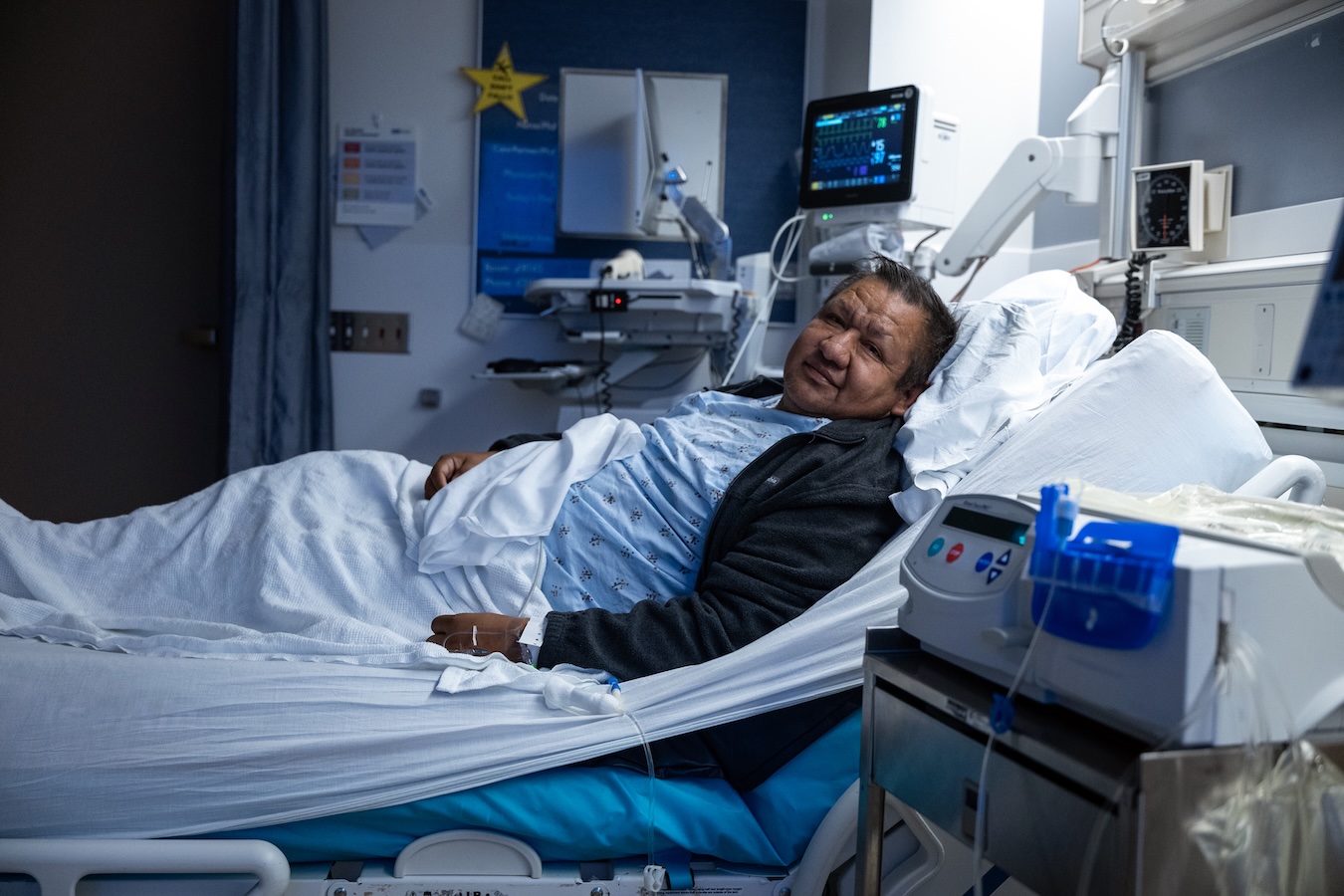Successful bladder transplant successful on man on dialysis for seven years: it is the first attempt in the world

The experimental intervention was successfully performed at the Ronald Reagan Ucla Medical Center (USA) on May 4 and could act as a tread for other transplants on carefully selected patients. The recipient, 41 years old, had lost his bladder during an operation for the resection of a tumor
In the United States, a land of experimentation for xenotrapriantshas been completed another innovative procedure in the transplant field. The surgeons of Keck Medicine of Usca And Ukla Health They performed the first bladder transplant on a human being in the world. The intervention was successfully performed at the Ronald Reagan Ucla Medical Center on May 4, 2025, thanks to the collaboration between Reprinting gill, md executive director of the founder of Utc Urology And Nima Nassiri, MD Urological surgeon specialized in transplants and director of the UCLA vascular composite transplant transplant program.
Carefully selected patients
«This surgery represents a historical moment for medicine and will have a significant impact on the way we manage carefully selected patients with « terminal » blisters Highly symptomatic and no longer working, « said Gill, who is also President and Professor of Urology and owner of the Cathedra Shirley and Donald Skinner of Oncological Urological Surgery at the Keck School of Medicine of the Uss . « Transplantation is a life -saving and improving therapeutic option for many pathologies that affect important organs, and now the bladder can be added to the list ».
Over four years of preparation
«This first attempt to transplant bladder was made in over four years« , Nassiri said. « For appropriately selected patients, it is exciting to be able to offer a new potential option ». Nassiri, ex specializing in urology at the Keck School and now associate professor of urology and renal transplantation at the UCLA, and Gill have worked together for the Keck School for several years to develop the new surgical technique, design a clinical experimentation and obtain the necessary regulatory approvals. Numerous preclinical procedures were performed both at the Keck Medical Center of the Uss and at onelegacy the organization for the supply of organs of southern California, to prepare this first bladder transplant on a human being.
The transplant recipient, Oscar Larrainzar (photo: Nick Carrance/Ucla Health)
A complicated but successful surgery
The recipient of the transplant, the 41 -year -old Oscar Larrainzar, father of four children, was in dialysis for seven years. He had lost most of the bladder during surgery for the resection of a tumor More than five years earlier, leaving the remaining part too small and compromised to function correctly. Both kidneys had subsequently been removed from him due to renal cancer.
Combined transplant of kidney and bladder
To deal with these deficiencies, the Doctors Gill and Nassiri performed a combined kidney transplant and bladderallowing the patient to immediately stop dialysis and to urinate for the first time in seven years. First the kidney was transplanted, then the bladder. The new kidney was then connected to the new bladder. The entire procedure lasted about eight hours. « The kidney immediately produced a large volume of urine and the patient’s renal function improved immediately, » added Nassiri. « No dialysis was needed after intervention and urine was properly drained in the new bladder. » « Despite the complexity of the case, everything went according to the plans and the intervention succeeded, » said Gill. « The patient is fine and we are satisfied with his clinical progress so far. » The recovery of the kidney and bladder by the donor was performed at the Transplant recovery center of Onelegacy in Azusa, California. All the phases of the procedure, including surgery and post-operative monitoring during the transplant, have compliant with the highest current clinical and research standards.
How a bladder transplant can be useful to patients
Millions of people around the world suffer from different types of disease and bladder dysfunction. Some develop terminal blisters That no longer work and/or cause constant pain, repeated infections and other complications. The current treatment For serious terminal cases of bladder dysfunction or for the blisters removed due to various conditions involves the replacement or increase in the urinary reserve. These surgical interventions use a portion of theintestine of the patient to create a new bladder or a path for the expulsion of urine from the body.
“Although these surgical interventions can be effective, they involve Many short and long term risks who compromise patient health, such as recurring infections, renal impairment and digestive problems, « explains Gill. « A bladder transplant, on the other hand, provides a more » normal « urinary reserve and can circumvent some of the challenges associated with the use of the intestine, » adds Nassiri.
The risks
The major risks of organ transplantation are potential rejection of the organ by the body and the side effects caused by immunosuppressants drugs mandatory to prevent the body’s rejection. «Given the need for long -term immunosuppression, The best current candidates are those who have already undergone an organ transplant or those who need a combined transplant of kidney and bladder, « said Nassiri. Being the first attempt conducted on humans, there are of course many unknowns associated with the proceduresuch as the immediate functioning and time of the transplanted bladder and the level of immunosuction that will be necessary. « Despite the unknowns, our goal is to understand whether the bladder transplant can help patients with blisters seriously compromised to lead a healthier life, » said Gill.
Collaborative research and development that lead to transplantation
The bladder transplants had never been performed previously, partly due to the complex vascular structure of the pelvic area and the technical complexity of the procedure. As part of the research and development phase, Gill and Nassiri they successfully completed Numerous transplant surgical interventions at the Keck Medical Center of the Uss, including the first robotic bladder samples and successful robotic transplants in five donors recently deceased with cardiac function maintained thanks to the ventilatory support. At Onelegacy, Gill and Nassiri performed several non -robotic evidence of the recovery of the bladder, which have allowed them to perfect the technique by working closely with multidisciplinary surgical teams. The bladder transplant was performed as part of a clinical experimentation of the UCLA. Gill and Nassiri hope to perform other bladder transplants together in the near future.








